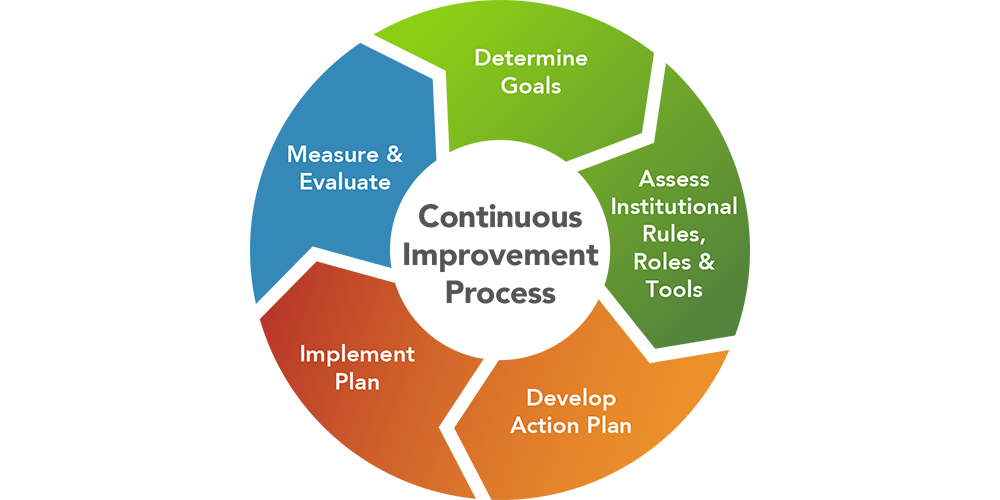
The measure and evaluation step is crucial to ensure that institutional change efforts produce successful results in meeting goals. To measure success, an evaluation is needed.
An effective evaluation:
- Provides a framework and information to support strategic planning efforts
- Confirms that actions being taken are proving effective or are in need of adjustment
- Identifies opportunities for new or increased improvement
- Helps justify actions to others for validation, increased support, and future resources.
Develop an Effective Evaluation
To develop an effective evaluation, you need to identify:
- Outputs and outcomes
- Baseline measurements
- Control groups.
Outputs
Outputs measure how an organization is doing things while outcomes are measures of how well an organization's efforts work. Institutional change programs will likely have a number of short-term outputs and a few long-term outcomes. For any output, several metrics could be selected. Output metrics help determine the effectiveness of the process. Outcome metrics help determine the effectiveness of the intervention itself. However, output metrics are tied to outcomes, so it's not an either/or situation—it's a both/and situation.
Baseline Measurements
Setting a baseline of current energy or resource use is essential to determining the extent to which a program or intervention is successful. Without a baseline it is not possible to determine whether an action has any effect. One important component in measuring the baseline is to do so before beginning the implementation. This way, evaluation is a program activity that is part of your overall program plan, not an after-the-fact analysis.
Control Groups
Data on output metrics will inform you of whether anything is changing relative to the baseline. An important question to ask is whether your program implementation is causing the change. Perhaps the best way to evaluate the impacts of an organization's implementation activities is to use a control group of employees. This control group would be employees with similar characteristics and elements to measure who are not aware of, or affected by, the program input. It is not always possible to establish a clear control group different from the test group but look for opportunities to use test or control groups when possible. Thoughtful program design and implementation using these types of techniques can make an evaluation accurate, effective, and convincing.
Keep in mind that programmatic impacts may take some time to develop, so it is important to allow the change to take effect before taking measurements. Make sure to establish a data collection plan that allows for this time lag.
Adjust Actions and Goals
Impact evaluations gauge changes from the start of an intervention, including the amount of energy, resources, or money saved. Process evaluations seek to identify the ways in which an implementation process can be made more efficient and effective. Process evaluations facilitate lesson learning and the establishment of best practices that organizations can apply.
Measurement and evaluation naturally lead to modifications to implementation efforts, goal redefinition, and the establishment of new goals. Therefore, measurement and evaluations are crucial to a cycle of continuous improvement.
Next Step: Repeat the Cycle for Continuous Improvement
The next step is to cycle back to Step 1. This time, refine or set new goals. This practice embodies the Continuous Change Principle. Periodically repeat the steps in the institutional change process for continuous change. Doing so will help ensure that the goals remain valid, that the action plan is still appropriate for your organization, and, most importantly, that interventions are resulting in measurable progress toward your sustainability goals.

